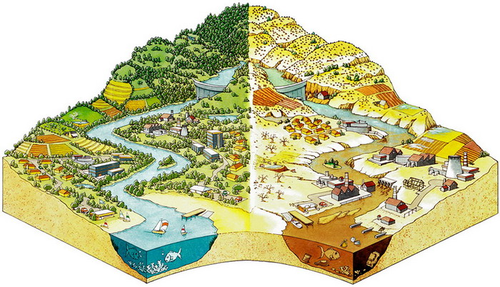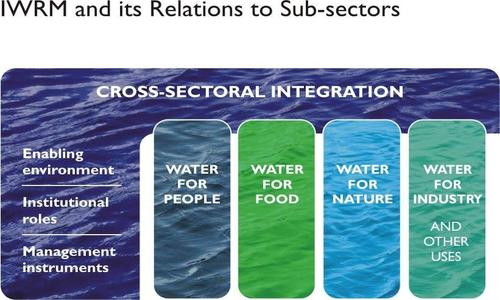What is IWRM?
Definition:
"Integrated water resources management (IWRM) is a process which promotes the coordinated development and management of water, land and related resources, in order to maximize the resultant economic and social welfare in an equitable manner without compromising the sustainability of vital ecosystems". (Agarwal et al. 2000)
Basis:
The basis of IWRM is that the many different uses of finite water resources are interdependent. High irrigation demands and polluted drainage flows from agriculture result in lower amounts of available freshwater for drinking or industrial use; contaminated municipal and industrial wastewater pollutes rivers and threatens ecosystems; if water has to be left in a river to protect fisheries and ecosystems, less can be diverted to grow crops. There are much more examples of the basic theme that unregulated use of scarce water resources is wasteful and inherently unsustainable.
IWRM helps to protect the world’s environment, foster economic growth and sustainable agricultural development, promote democratic participation in governance, and improve human health. Worldwide, water policy and management are beginning to reflect the fundamentally interconnected nature of hydrological resources, and IWRM is emerging as an accepted alternative to the sector-by-sector, top-down management style that has dominated in the past.
Integrated Water Resources Management is a cross-sectoral policy approach, designed to replace the traditional, fragmented sectoral approach to water resources and management, which led to poor services and unsustainable resource use. IWRM is based on the understanding that water resources are an integral component of the ecosystem, a natural resource, a social and economic good.
(GWP 2010a)
However, it needs to be kept in mind that:
IWRM practices depend on context; at the operational level, the challenge is to translate the agreed principles into concrete action. Nevertheless, the concept of IWRM is widely debated and an unambiguous definition of IWRM does not currently exist. Hence, the regional and national institutions must develop their own IWRM practices using the collaborative framework emerging globally and regionally (Agarwal et al. 2000).

